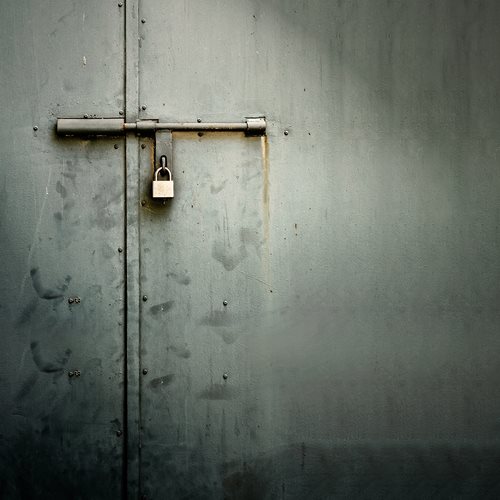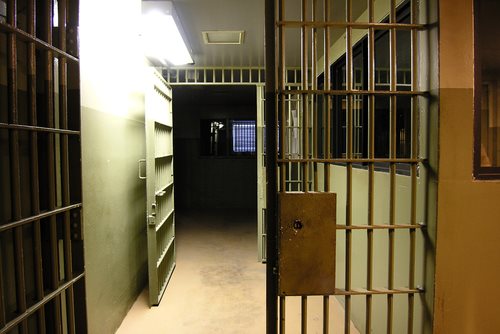Sharia Law and Rules: Understanding the Basic Tenets and Principles
Sharia Law is an Islamic legal system that derives its principles and regulations from the Quran and Hadith, which are the holy books of the Muslim religion. It is the comprehensive framework on which Islamic society is based, covering all aspects of life from relationship to commerce, from worship to governance. In the Western world, Sharia Law is often under a lot of scrutiny and viewed with suspicion, partly because of its association with extremism and terrorism. However, it is important to understand the basic tenets and principles of Sharia Law and Rules in order to appreciate its contribution to society, and to dispel any misconceptions surrounding its practice.
The Meaning of Sharia Law
Sharia Law is derived from the Arabic word Shariah, which means “path” or “way to water.” It refers to the pathway that leads to the pure and clean water of life. For Muslims, Sharia Law is a divine code of conduct that outlines the obligations and responsibilities that Allah (God) expects of them. It is not a man-made set of rules and regulations; it is a guide to salvation that governs the behavior of Muslims worldwide.
Sharia Law is not a static code of conduct; it is dynamic and adaptive, responding to the changing needs of society while remaining within the boundaries set by the Quran and Hadith. Its basic principles and regulations have remained the same, but the interpretation of these principles has varied according to the changing social, political, and economic circumstances of Islamic communities worldwide.
The Sources of Sharia Law
Sharia Law has its roots in the holy book of Islam, the Quran. It contains the revelations of Allah to the Prophet Muhammad, which were recorded in the Arabic language. The Quran is divided into 114 chapters, each containing verses that provide guidance on a wide range of topics, including worship, morality, social conduct, and governance.
The Hadith is an equally important source of Sharia Law. It refers to the sayings and actions of the Prophet Muhammad, recorded by his companions and later scholars. The Hadith provides insight into Islamic traditions, the Prophet’s practices and behaviors, and the ethical standards of early Islamic society. It is considered part of the Sunnah, or the recorded teachings of the Prophet Muhammad.
In addition to the Quran and Hadith, Sharia Law also takes into account the interpretations and opinions of Islamic scholars and jurists, as well as consensus (ijma) and analogy (qiyas). The consensus refers to the agreement of Islamic scholars on a specific issue or matter. Analogy refers to the application of Islamic principles to new situations or circumstances.
The Basic Principles of Sharia Law and Rules
Sharia Law and Rules cover all aspects of life, including moral and ethical behavior, family and social relationships, economic and financial transactions, and political and legal governance. The following are the basic principles of Sharia Law:
1. Tawhid – Monotheism: Tawhid is the belief in the oneness of Allah and the importance of worshipping Him alone. It is the foundation of all Islamic beliefs and practices.
2. Shirk – Idolatry: Shirk refers to the practice of worshipping idols or other objects besides Allah. It is considered a grave sin in Islam.
3. Salah – Prayer: Salah is the compulsory prayer that Muslims perform five times a day. It is a means of seeking Allah’s guidance and seeking forgiveness for one’s sins.
4. Zakat – Almsgiving: Muslims are required to give a portion of their wealth to the poor and needy. It is one of the five pillars of Islam.
5. Sawm – Fasting: Muslims are required to fast during the month of Ramadan, abstaining from food and drink from dawn until sunset. It is a means of gaining self-discipline and spiritual purification.
6. Hajj – Pilgrimage: Muslims who are physically and financially capable of doing so are required to perform the Hajj, or pilgrimage to Mecca, at least once in their lifetime.
7. Jihad – Struggle: Jihad refers to the struggle or effort made in the path of Allah, which could be through good deeds, charitable works, or defensive warfare.
8. Akhlaq – Morality: Muslims are required to conduct themselves with honesty, integrity, kindness, and compassion. It is considered a duty to one’s fellow Muslims and to society at large.
The Role of Sharia Law and Rules in Islamic Governance
Sharia Law and Rules provide the legal framework for Islamic governance, which is based on the principles of justice, equality, and accountability. Sharia Law emphasizes the importance of good governance, transparency, and accountability, and encourages active participation by citizens in the governance process.
Islamic governance is based on the principles of consultation (shura), consensus, and accountability. It is the duty of Islamic leaders to ensure that the laws and regulations are in line with Islamic principles and that they are consistently applied to all citizens regardless of their social status, ethnicity, or gender.
Sharia Law and Rules also provide guidance on matters such as the distribution of wealth, social welfare, and the protection of human rights. It emphasizes the importance of social justice, and calls for the establishment of fair and equitable societies where everyone has access to basic necessities such as food, shelter, and healthcare.
The Misconceptions Surrounding Sharia Law and Rules
In recent times, Sharia Law has been associated with extremism, terrorism, and human rights abuses. However, these perceptions are largely based on a misunderstanding of its principles and a misrepresentation of its practice.
One of the most common misconceptions about Sharia Law is that it is harsh and inhumane, and advocates for punishments such as stoning, beheading, and amputations. While some Islamic countries do practice these punishments, they are based on a strict interpretation of Islamic law and are not endorsed by all Islamic scholars. The majority of Muslim-majority countries have moved away from these forms of punishment and have adopted more modern and humane legal systems.
Another misconception is that Sharia Law is anti-democratic and anti-women. While it is true that Sharia Law takes a conservative view of gender roles, it does not advocate for the oppression of women. In fact, Sharia Law provides protections for women’s rights, including the right to education, employment, and property ownership. Islamic societies that practice Sharia Law have seen significant progress in women’s rights and have made significant contributions to the advancement of women’s rights in the Muslim world.
Conclusion
In conclusion, Sharia Law and Rules are an integral part of Islamic society, providing a comprehensive framework for personal and societal conduct. It is based on the principles of justice, equality, and accountability, and emphasizes the importance of good governance, social justice, and human rights. It is important to understand the basic principles and regulations of Sharia Law and Rules in order to appreciate its contribution to society, and to avoid misconceptions and prejudices that may hinder its practice and development.
What is Sharia Law?
Definition
Sharia law, translated into “the path”, is the code of conduct for religious law in Islam. It is composed of the teachings of the Qur’an, the Muslim holy book, and the teaching of the prophet Muhammad, in the Sunnah. Secondary sources of Sharia law include the teachings of Muslim scholars.
Composition
Sharia law encompasses all aspects of society including crime, politics, economics, sexuality, family law, diet, hygiene and fasting. Traditionally in Muslim countries Sharia law was considered the law of the land. Some common attributes of Sharia law include:
• The masking of women when in public
• Adoption is prohibited
• Prohibition against intermarriage between Muslims and non-Muslims
• Homosexuality is strictly forbidden; a 4 time offender gets the death penalty
• Men can be the only witnesses to crimes
• It is a crime to abandon the Islamic faith
• The display of an image of the prophet Muhammad carries the death penalty
One of the hallmarks of Sharia law is the inferiority to which it classifies women. A common example is if a woman is raped and becomes pregnant she is sentenced to death by stoning strictly for becoming pregnant out of wedlock. The man who raped her, however, is usually free of any wrongdoing.
Sunni & Shi’a
There are two main sects of Islam, the Sunni and the Shi’a. The Sunni believe that not only the Qur’an and Sunnah should be used in the practice of Sharia law, but also some of Muhammad’s other works such as the sahaba and the ulema. The Sunni also employ analogies to the Qur’an and the Sunnah when deciding issues. The Shi’a, in the alternative mostly frown upon the use of analogies and pride themselves on the use of logic. Where the Sunni use Muhammad’s secondary books to “fill in the gaps” of Sharia law the Shi’a use the teachings of the 12 imam, disciples of Muhammad that spread his original message.
Sharia Law Countries
Currently there are a number legal systems in the Middle East and Asia that deal with Sharia law. Some nations such as Mali, Kazakhstan and Turkey have a strictly secular government where Sharia law is only limited to personal and family matters. Others like Pakistan, Indonesia, Afghanistan, Sudan and Morocco follow a more integrated approach. In their law the secular government, although influenced by Sharia law, is the ultimate law and the constitution of the nations are upheld over conflicts with Sharia law. Then there are the fundamentalist Islamic nations such as Saudi Arabia, Iran and the Persian Gulf nations where Sharia law is the same as secular law.
Tenants of Sharia law
Sharia law is divided into 11 main tenants:
1. Purification
2. Prayer
3. The Funeral Prayer
4. Taxes
5. Fasting
6. The Pilgrimage
7. Trade
8. Inheritance
9. Marriage
10. Divorce
11. Justice
Purification
This tenant of Sharia law prescribes how an individual is supposed to maintain purity and spiritual dimension. It entails the use of water, soil, or other “cleaners” for cleansing purposes. It imposes rules about contact with “impure” animals and delegates cleaning rituals to be done before and after prayer as well as the proper way to clean dishes, clothing and homes.
Prayer
Sharia law details every aspect of daily prayer. One of the tenants most well known rituals is praying towards Mecca 5 times a day. Sharia law also delegates who can pray and where to pray.
Funeral prayer
Sharia law also has a detailed way of dealing with the ill and the burial of the deceased. There is a specific way that the dead are to be buried. This includes certain cleaning and dressing rituals as well as the burial itself, where the deceased is put in a grave perpendicular to Mecca and the body is placed sideways, facing Mecca.
Taxes
The Qur’an details how the wealthy should treat the poor. In Sharia law it is required that those individuals who are deemed wealthy pay a tax, known as a zakat, in order to help the poor. The percentage is not prescribed by the Qur’an and it may be adjusted as needed.
Fasting
Sharia law designates the month of Ramadan to be a month of fasting where individuals may not partake in food, drink, or sexual activity during daylight hours. Islamic law specifically prescribes the methods of fasting as well as the times, who must fast and any exceptions.
Pilgrimage
Specifically prescribed in the Qur’an, at least once in the life of a Muslim an individual must travel to Mecca to perform a ritual ceremony. This ceremony is performed two months after Ramadan and is very strict on the practices that must be performed
Trade
Sharia law specifically prohibits certain business actions including the charging of interest or insurance. For these, and many other reasons, the majority of businesses in the Islamic world are partnerships, instead of corporations.
Inheritance
Inheritance rights in Sharia law tend to favor men. Typically a woman will receive one half the amount of inheritance her male counterpart would have received. The property distribution allowed by Shariah law prescribes that 1/3 of the property may go to bequests and the rest, after debts, is distributed to family members under the intestacy rules of Sharia law.
Marriage
There are two forms of marriage under Sharia law, the nikah and the nikah mut’ah. Essentially the nikah is an “official” marriage where there is a dowry given to the bride and a contract of marriage signed. A nikah marriage entitles the couple to inheritance rights. Under Sharia law a man is permitted to have up to 4 nikah wives.
The second common type of marriage is the nikah mut’ah. This second type of marriage is often known as a “Haram.” It is a marriage that lasts for a specific period of time and at the end of a prescribed period the marriage is dissolved. Women in nikah mut’ah marriages do not get inheritance rights and the husband is not responsible for the wife’s economic well-being. A nikah mut’ah marriage does not count towards the 4 wives allowed by Sharia law.
Divorce
Under Shi’a divorce law, a man may divorce upon telling her of his intentions. Under Sunni law it must be witnessed by 4 individuals. All aspects are controlled by Sharia law, including child support.
Sharia legal system
The procedural and substantive aspects of Sharia law are different in many respects from those known to people in this country. First and foremost, there are no juries or attorneys. The trial consists of strictly the judge, plaintiff and defendant. There is no discovery, no cross-examination of witnesses, no stare decisis (the following of case precedents) and no codified statutes.
There are 3 categories of cases, Qisas, hududd and tazir. The Qisas is the equivalent of a personal injury action. It encompasses all cases from murder to battery. In these cases, upon conviction, the defendant or his family are the ones who decide upon the sentence, which can range from death or dismemberment to compensation.
The hududd is the second kind of case. These are cases that are brought before the court based solely on violations of the Qur’an. They include: adultery, blasphemy, defamation, sodomy, theft, intoxication, and armed violence. There is no circumstantial evidence allowed and there must be 2 to 4 witnesses, who are male, to corroborate. This is one reason why women who have been raped or abused are often treated as the criminals in Sharia society.
The third type of case is the tazir. This encompasses all other crimes.
Sharia law and the United States legal system
Cases
Sharia law has become an increasing concern in the United States. Many European countries have adopted a policy of allowing Sharia law in some contexts. The English government has made it possible so that a number of Sharia courts of law exist where Muslims may settle actions involving divorce, contracts, and estates in the Muslim way.
Sharia law has not taken that course in this country and many legal cases have weighed heavily on the institution of Sharia law in the American legal system. In one case a wife wished to get a restraining order against her husband for because he would forcibly rape and abuse his wife. The man contended that Sharia law allowed him to do this and he should the restraining order should not be granted. The trial court granted the husbands motion but on appeal the appellate court ruled that Sharia law should not excuse him from the state’s criminal code.
In all the courts in this country are open to interpreting Sharia law in situations involving divorce, family, and estates but every jurisdiction is different and the case law is not one sided in the least. Last year Oklahoma passed a voter referendum known as the “save our state amendment.” The referendum made it law to prohibit judges in Oklahoma courts to consider Sharia, as well as international law when deciding cases. There are many arguments for its unconstitutionality, namely that it violates the separation of powers in that the legislature cannot interfere with the workings of the judicial system. Immediately after the passage of the bill a Muslim American named Awad filed suit to have the bill repealed based on the establishment clause of the U.S. Constitution. The case has just gone to the 10th Circuit Court of Appeals and the results of the oral argument have not yet been determined.







